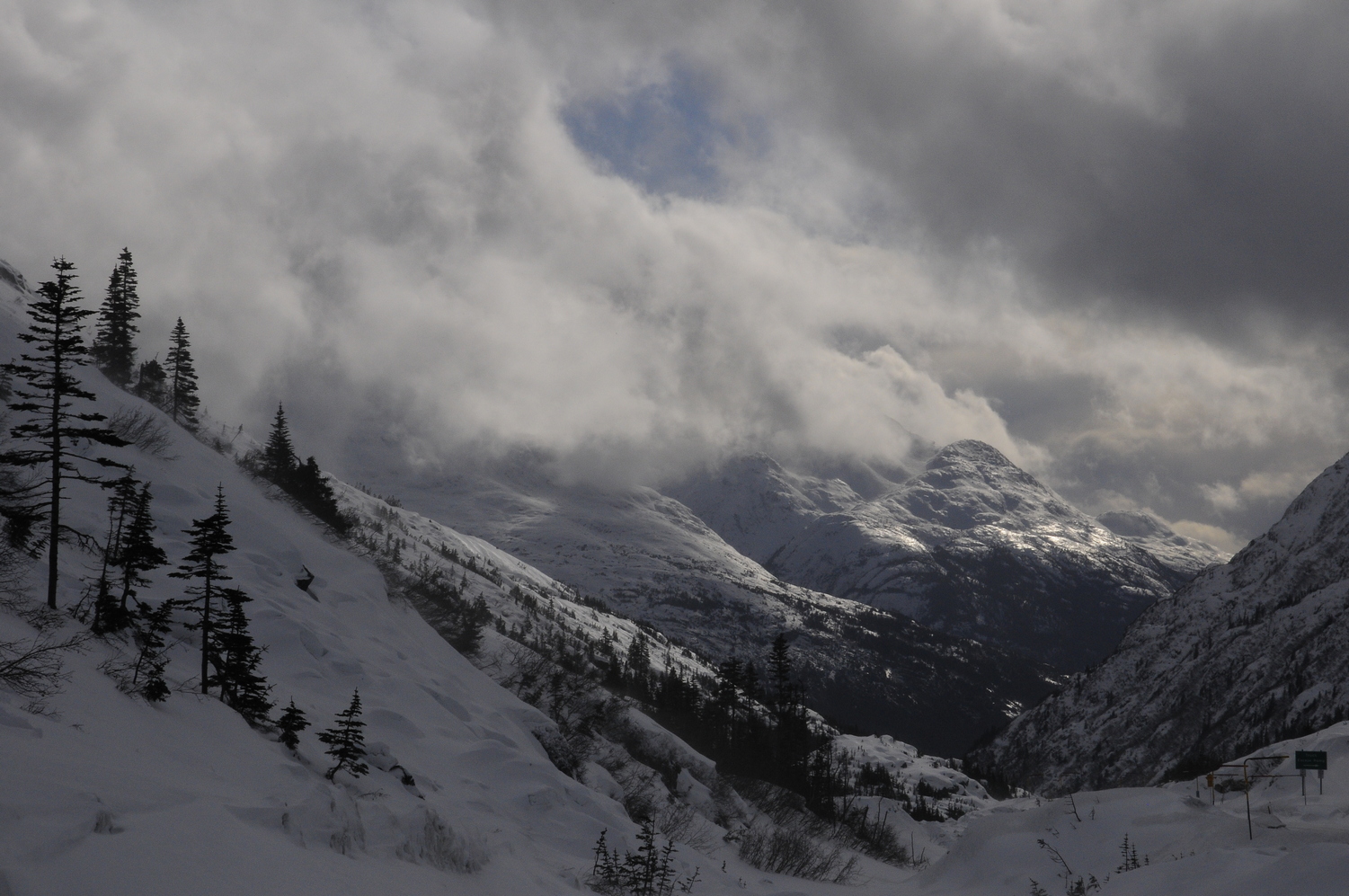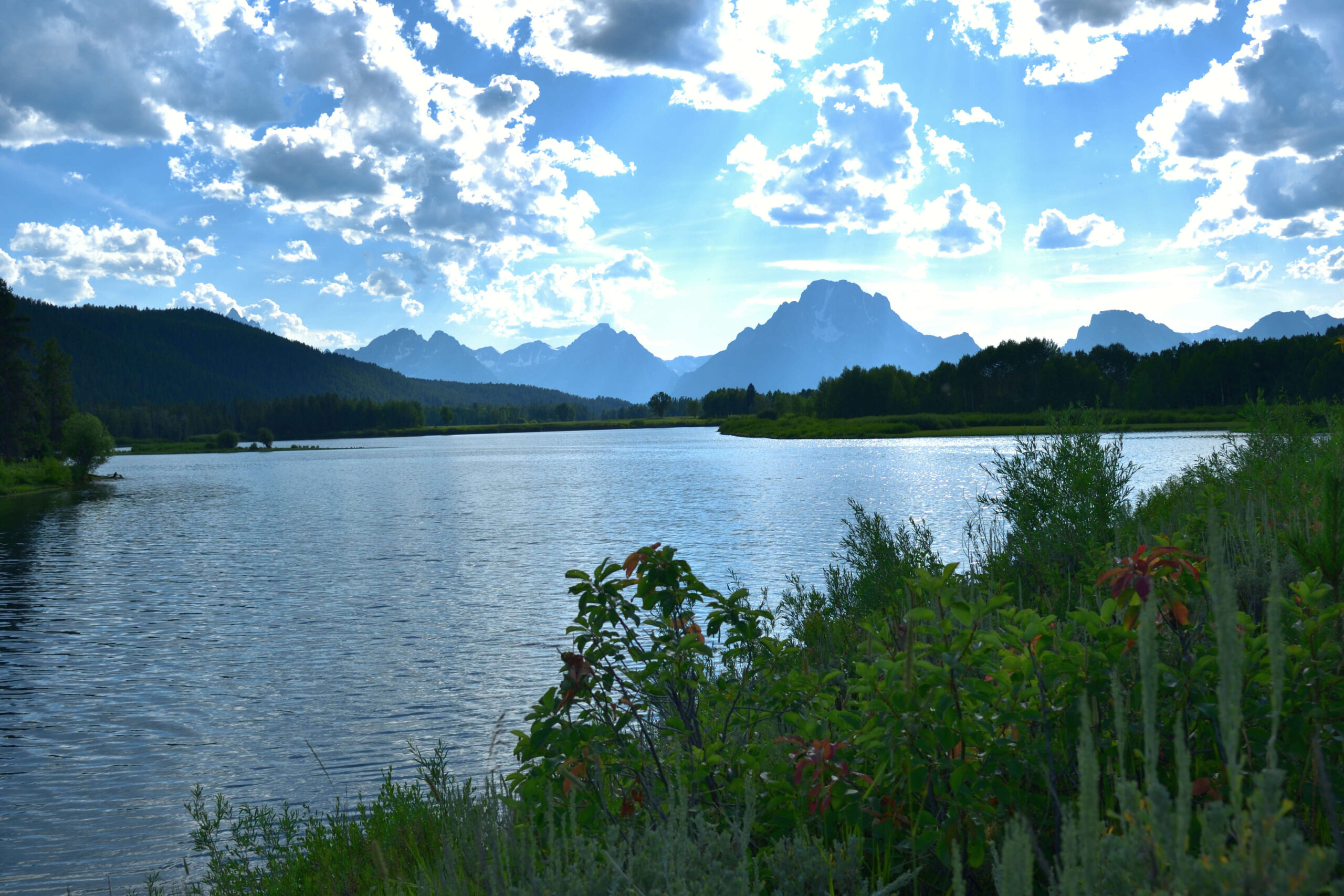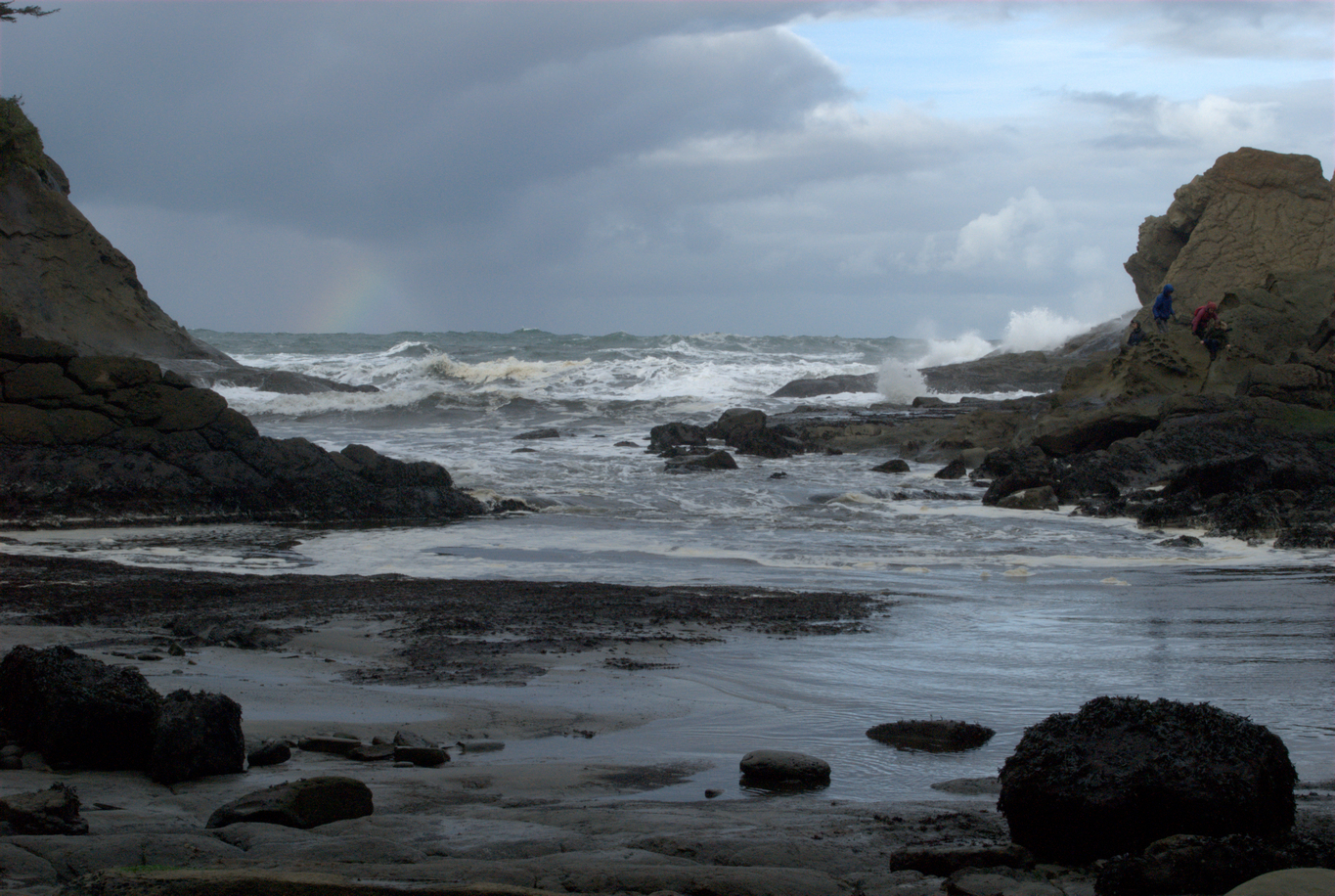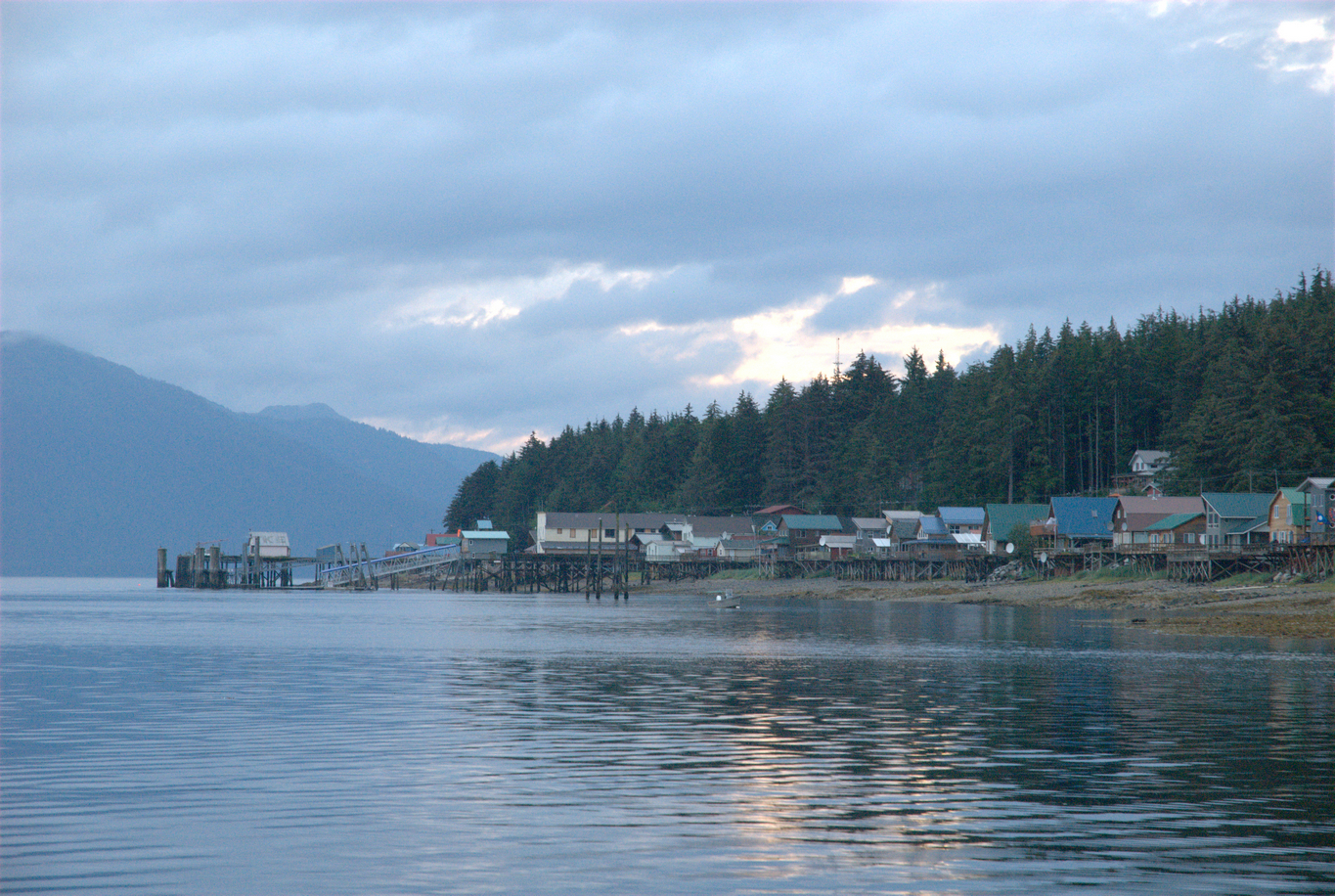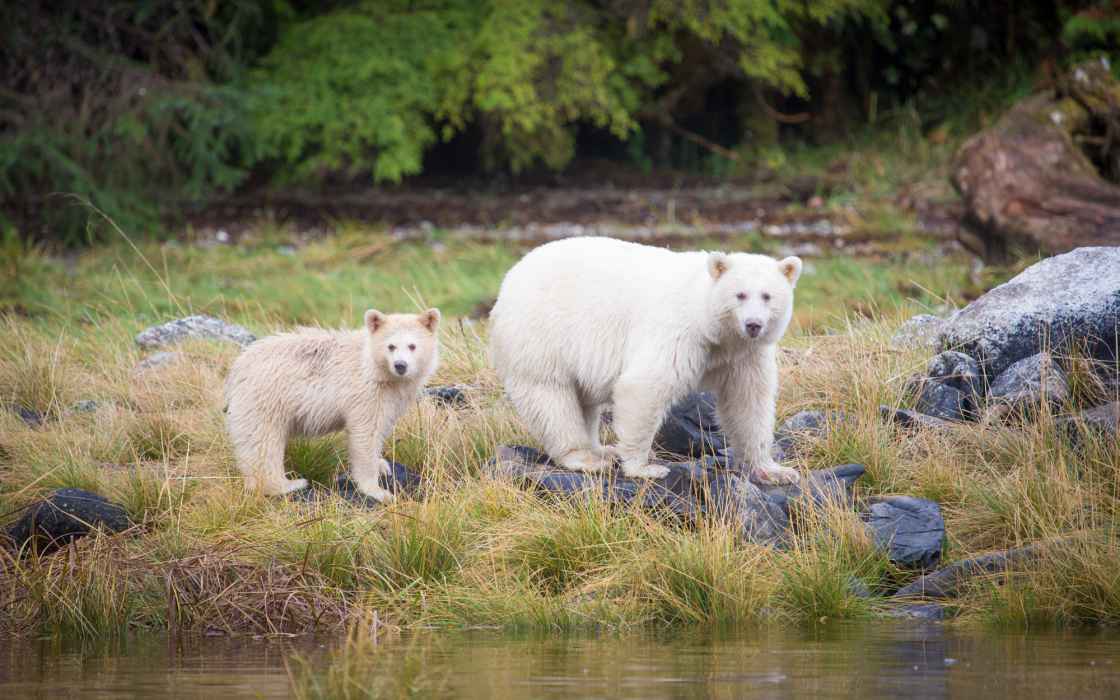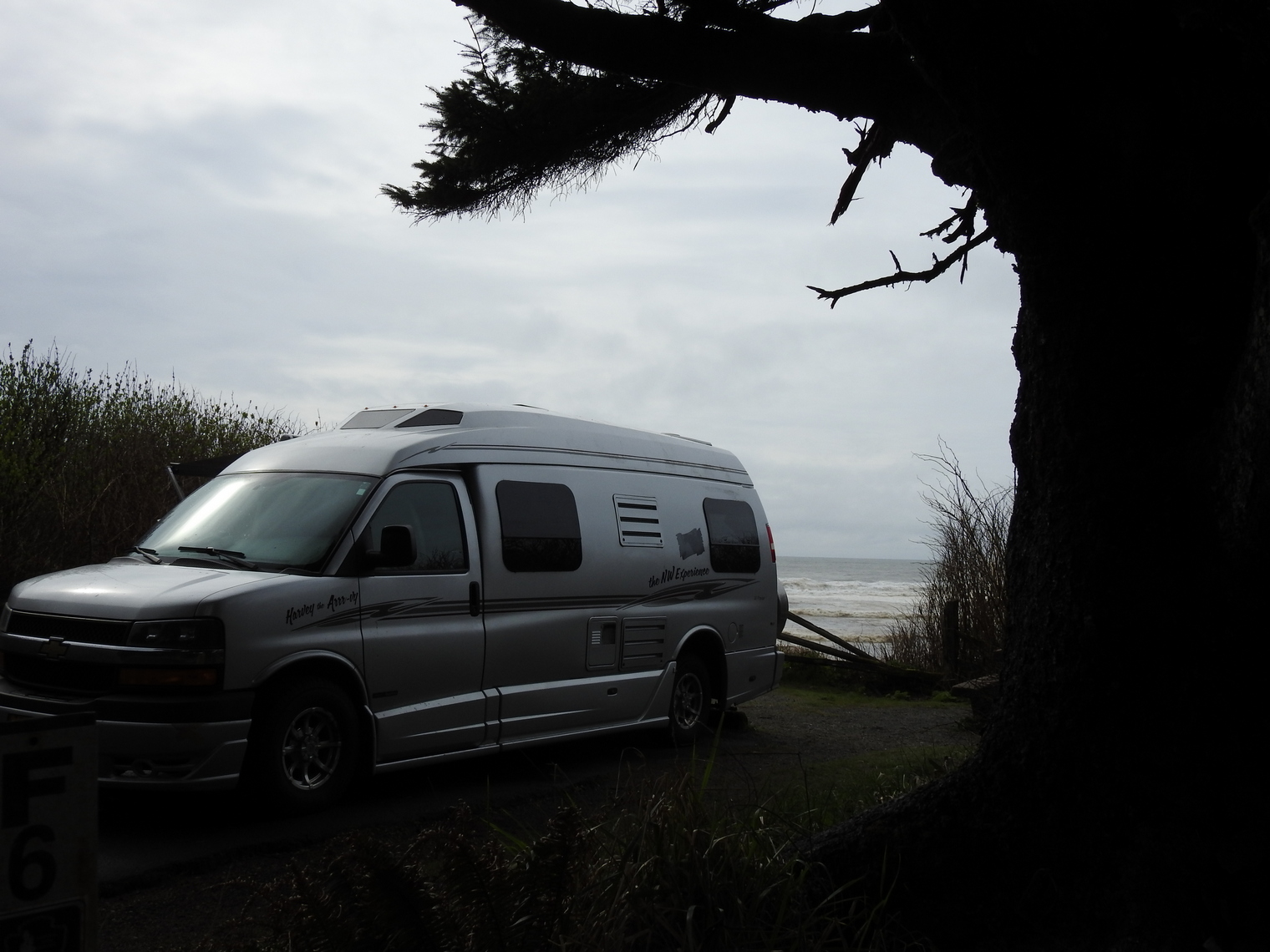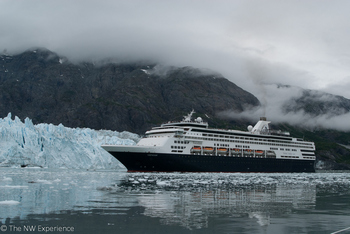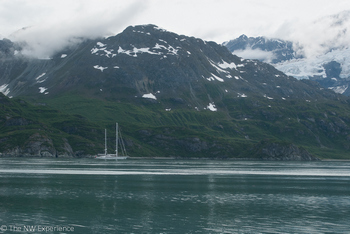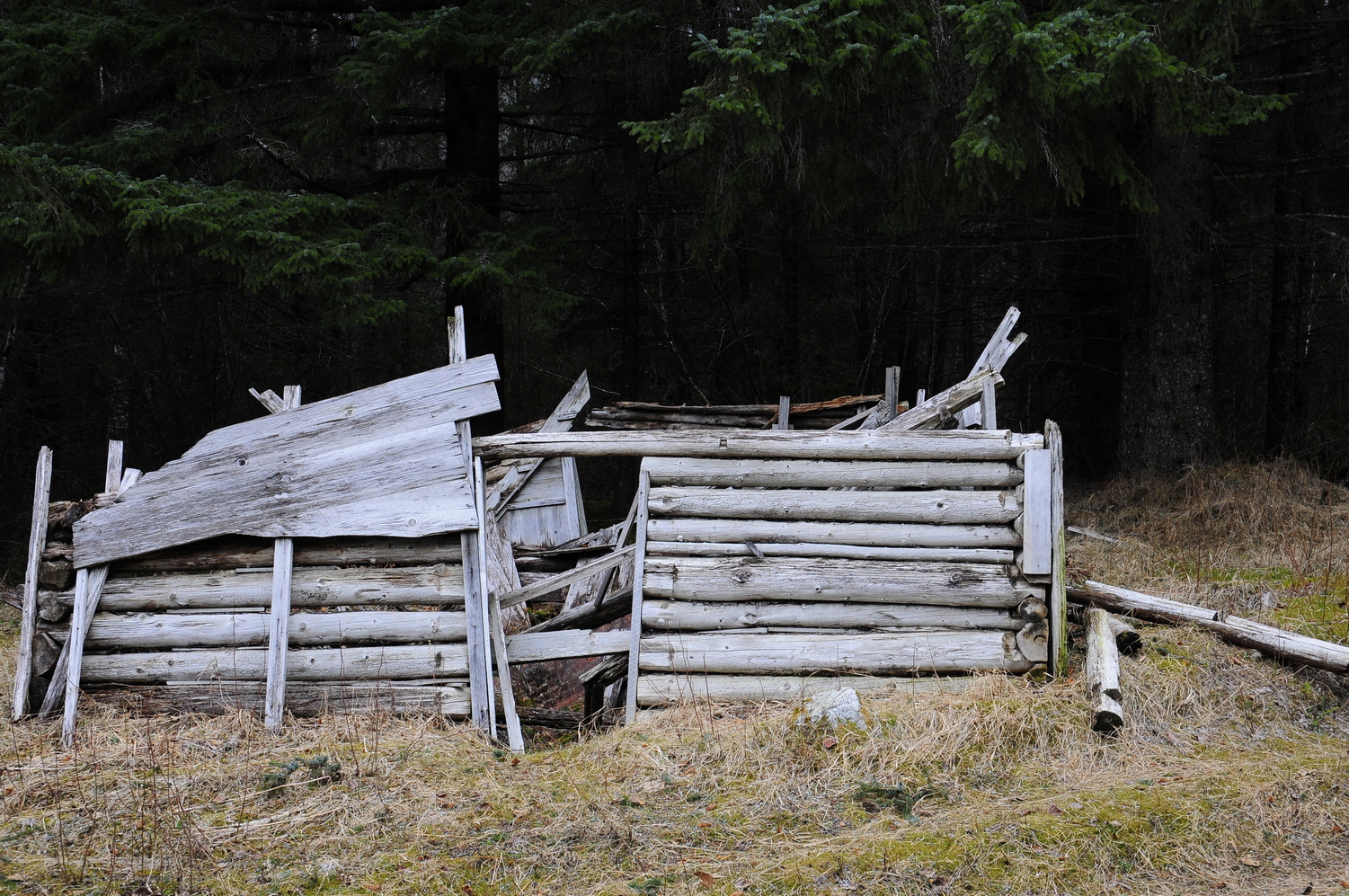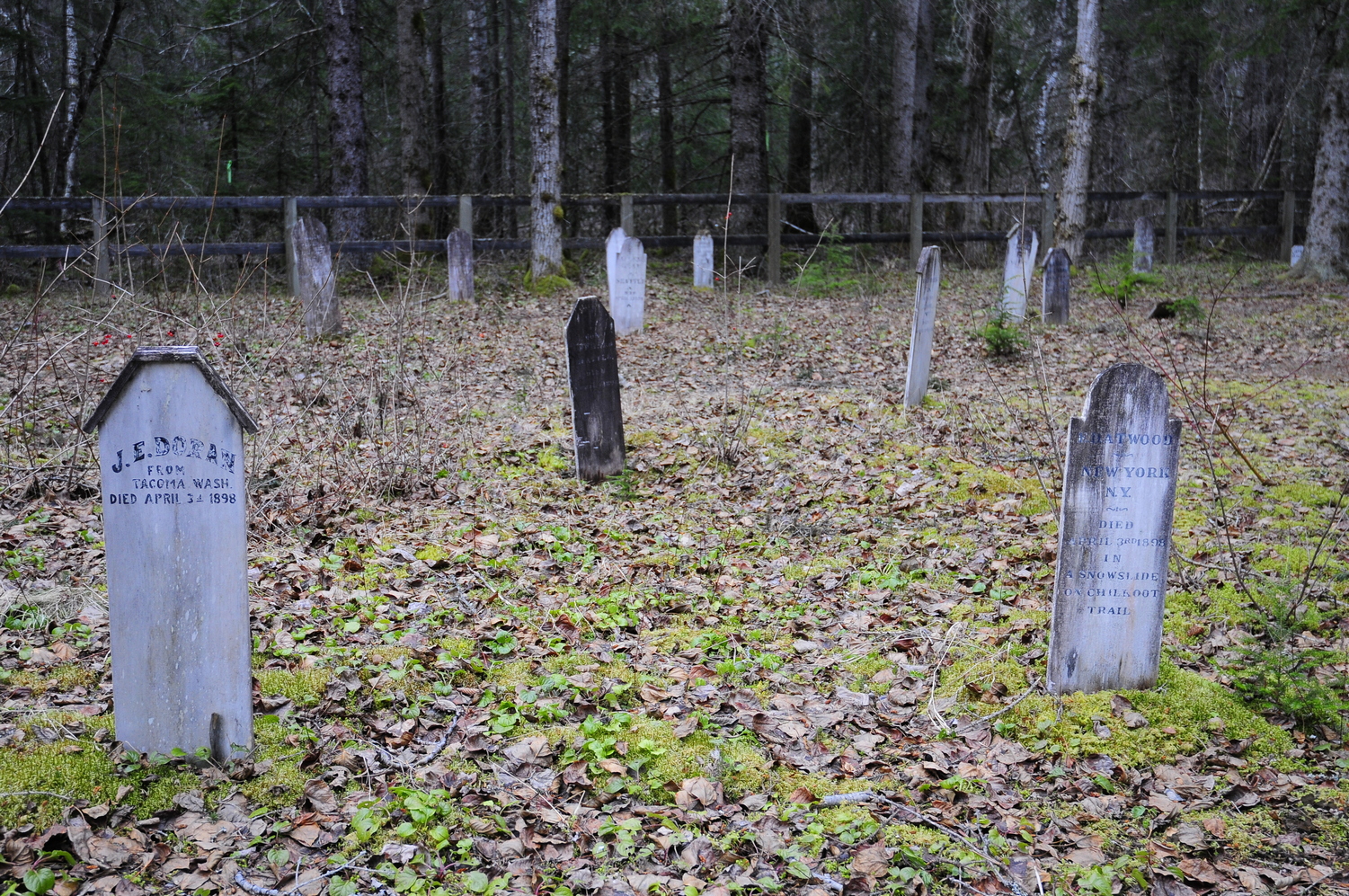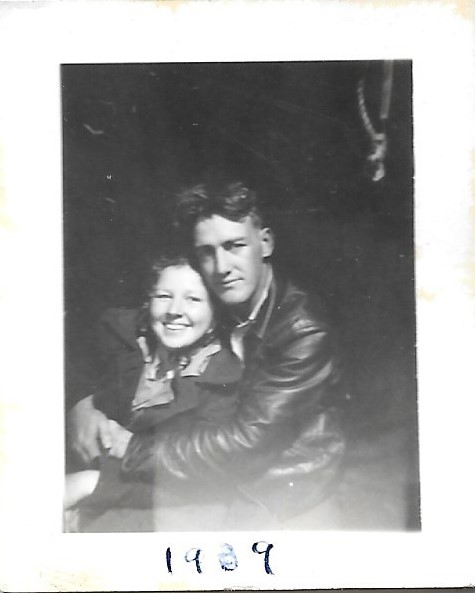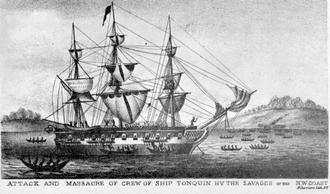Stories about living and growing up in the Pacific Northwest
(by Northwest writers and photographers)
FEATURED BLOG:
- Juan de Fuca’s Strait

Cape Flattery from the land side. Most of us who grew up in the Pacific Northwest have no Idea who the Straits of Juan de Fuca was named after. Most of us, who lived and sailed around that body of water, just called it “the straits”. But then again when those of my siblings or me sitting in the back seat of the family car going to Crescent Beach located on the north coast of the Olympic Peninsula, always wanted to be the first to sing-song “I see the Salt Chuck” (Chinook jargon for sea), when we sighted “the beach”.
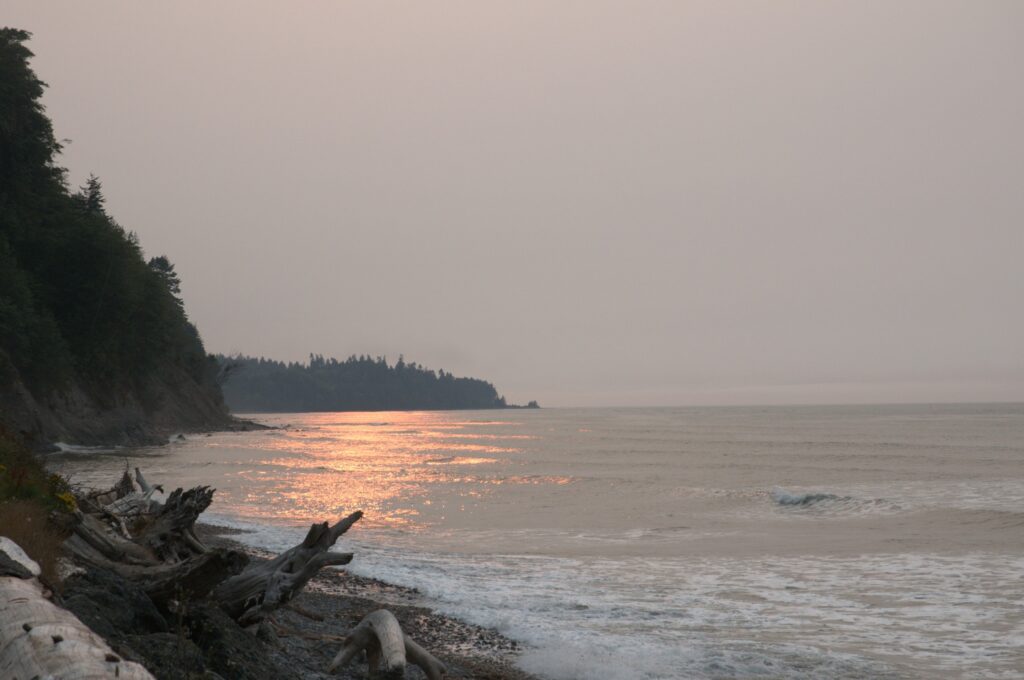
Photo from below the cliff of our 88 acre stump farm on the Olympic Penisulula. This writer was lucky enough to have lived within ¼ mile from ‘the straits’ and could watch freighters and sailboats sail by. When our eighty-eight acre ‘stump’ farm was enveloped in fog (usually every evening at about 4:00), the mournful sound of ships foghorns would be welcomed to this young boy’s ears, not unlike the sirens of the Odyssey. The feel of the fog wrapping around me and the sound of ‘the straits’ is probably why I spent so many years sailing our NW waterways.
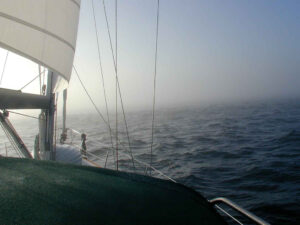
Rounding of Cape Flattery in S/V Autumn Daze Many times, while sailing my own 43′ sailboat while on watch with my hand on the cap rail, I would ponder what it must have been like for the early European sailors to sail in these uncharted waters. I could only imagine, given what little I knew about the Greek Pilot, Juan de Fuca, must have felt as he turned his vessel into a body of water that he thought might be the mythical Strait of Anian…
…Juan de Fuca was sent north for the second time to find by the Viceroy of New Spain, Luis de Velasco (1550-1564)…
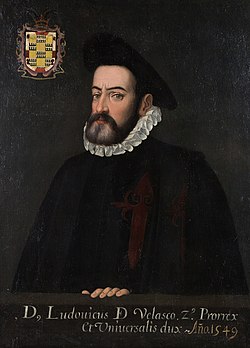
Luis de Velasco …Let’s go back in time to 1596 when an English merchant, Michael Lok met a Greek pilot (navigator/captain), Apostolos Valerianos (other times referred to as Loannis Phokás), and talked about a voyage the mariner took in 1562.
(A Note made by me, Michael Lok the elder, touching the Strait of Sea, commonly called Fretum Anian, in the South Sea, through the North-west passage of Meta incognita…)
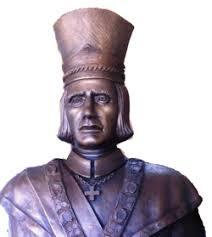
Supposedly a bust of Juan de Fuca “When I was at Venice, in Aprill 1596 happily arrived there an old man, about threescore yeares (60) of age, called commonly Juan de Fuca, but named properly Apostolos Valerianos, of Nation a Greeke, borne in the Iland Cefalonia, of profession a Mariner, and an ancient Pilot of Shippes. This man being come lately out of Spaine, arrived first at Ligorno, and went thence to Florence in Italie, where he found one John Dowglas, an Englishman, a famous Mariner, ready comming for Venice, to be Pilot of a Venetian Ship, named Ragasona for England, in whose company they came both together to Venice. And John Dowglas being well acquainted with me before, he gave me knowledge of this Greeke Pilot, and brought him to my speech: and in long talke and conference betweene us, in presence of John Dowglas: this Greeke Pilot declared in the Italian and Spanish languages, thus much in effect as followeth. First he said, that he had bin in the West Indies of Spaine by the space of fortie years, and had sailed to and from many places thereof, as Mariner and Pilot, in the service of the Spaniards. Also he said, that he was in the Spanish Shippe, which in returning from the Ilands, Philippinas and China, towards Nova Spania, was robbed and taken at the Cape California, by Captaine Candish Englishman, whereby he lost sixtie thousand Duckets, of his owne goods. Also he said, that he was Pilot of three small Ships.The mariner, better known by his Spanish name, Juan de Fuca described sailing from Mexico north to 47-48 parallel then turning east for many days along a strait.
And that at the entrance of this said Strait, there is on the North-west coast thereof, a great Hedland or Iland, with an exceeding high Pinacle, or spired Rocke, like a piller thereupon.
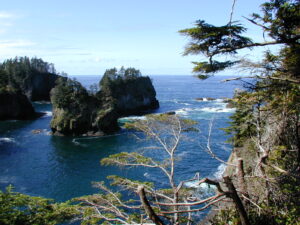
Cape Flattery from the land side. Also he said, that he went on Land in divers places, and that he saw some people on Land, clad in Beasts skins,
And also he said, that he being entred thus farre into the said Strait, and being come into the North Sea already, and finding the Sea wide enough every where, and to be about thirtie or fortie leagues wide in the mouth of the Straits, where hee entred; hee thought he had now well discharged his office, and done the thing which he was sent to doe: and that hee not being armed to resist the force of the Salvage people that might happen, hee therefore set sayle and returned homewards againe towards Nova Spania, where hee arrived at Acapulco, Anno 1592 hoping to be rewarded greatly of the Viceroy, for this service done in this said Voyage.”
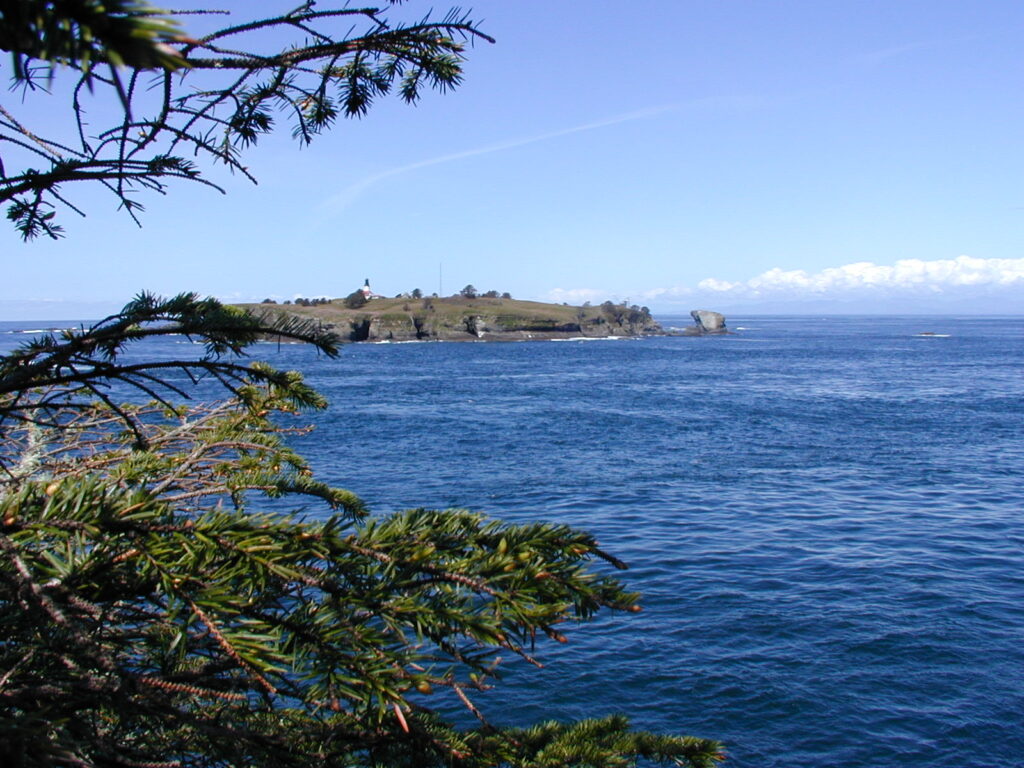
Tatoosh Island as Juan de Fuca probably saw it, minus the lighthouse. … In the hundred years following the “discovery” of the Americas, the European monarchs were trying to claim as much of the unknown world and its riches as possible for themselves, even to the point of attempting to disprove others claims of discovery. Hence, trying to discredit Spain’s Greek Pilot Juan de Fuca’s apparent discovery of the strait between 47 and 48 degrees in 1592 by others. Even the English Navigator, Captain Cook in March 1778, sought to discredit the discovery of almost 200 years before as he sailed past it, well out to sea with gale winds and heavy rains obscuring the entrance. “It is in the very latitude we now are, that geographers have placed the pretended Strait of Juan de Fuca. But we saw nothing of it, nor is there the least possibility that any such existed”.

Charles William Barkley It wasn’t until late in July 1787 that an English Trader, in his ship Imperial Eagle, Charles William Barkley who had sailed from England by way of Hawaii to Nootka Sound in search of furs came across John Mackay. Mackay had been the assistant surgeon aboard another ship, Experiment whose backer Charles Stewart Strange had ordered him to stay behind to record the language and customs of the natives. Unfortunately, Strange never came back, leaving him stranded among the Nun-chah-nulth peoples.
Mackay had come to believe that Nootka was on a large island, not the mainland. Barkley then sailed south to name Wickaninnish Sound and Barkley Sound. Further south, he came across another body of water and realizing this was quite possibility the body of water that Juan de Fuca had described to Loc in 1596 then decided to name it after him.
Along with him was his 17-year-old wife, Frances Barkley who is believed to be the first European woman to see British Columbia, and the first to sail around the world openly as a woman, explained in her journal that “the entrance appeared to be about four leagues in width, and remained about that width as far as the eye can see. Capt. Barkley at once recognized it as the long-lost strait of Juan de Fuca, which Captain Cook had so emphatically stated did not exist.”

Captain Cook (The famous Captain James Cook had not been the only one to refute the legend of Juan de Fuca and his strait. By the mid-eighteenth century, the story and the man were thought of more as myth than as fact, and the channel, supposed to be the entrance to the Northwest Passage and the fabled Strait of Anián, was considered a fairy tale of early exploration).
Barkley realized that the strait entrance was only off by 60 degrees from what Fuca claimed, and also had a great headland or island with high pillar rocks (like Jones Rock and other pillars around Tatoosh Island). Also, Fuca’s description of the inland waters seems to match what he saw, convinced him of the truth of the discovery. Fuca’s claims about the land being “rich with gold, silver, pearle and other things, like New Spania”, he lied about to help with him getting the prestige and hope of wealth from Spain.

The Pillers at the entrence to Juan de Fuca’s Strait The objective for these expeditions in history is unknown, and apparently no colonial Spanish documents have survived to corroborate Juan de Fuca’s story. According to the Greek, these expeditions were sent “to discover the Strait of Anián, along the coast of the South-Sea [Pacific Ocean], and to fortify in that Strait, to resist the passage and proceedings of the English Nation, which were feared to pass through those Straits into the South Sea.” The Strait of Anián was believed to exist somewhere in the Northern Pacific, leading to a navigable Northwest Passage into the Atlantic. Rumors of such a maritime passageway can be traced as far back as Marco Polo, and in the late sixteenth century, with European powers and their explorers vying for trade routes to the Far East, discovering and controlling such a strait was of utmost importance.
Whether or not Juan de Fuca or Apostolos Valerianos, (Loannis Phokás) ever actually made it as far north as the 47th Parallel and the strait leading into what today is Puget Sound and the Salish Sea is unclear. Regardless of the veracity of the old Greek’s story, his presence in the annals of European exploration and the geography of the Pacific Northwest is indisputable. The power of myth and memory is demonstrated through his namesakes, the strait and the pillar, Mount Olympus and the neighboring mountain range. That a story, born in the streets of an Italian city in the late sixteenth century, could transcend time and space, and influence both the explorers of the eighteenth century and the names into the 21st century is a testament to the strength and importance of compelling myth over the scraps of historical fact and documentation.

Portion of the chart of the Interior Part of North America made in the years 1788-1789. Instead of Juan de Fuca’s Strait, it’s called John de Fuca’s Strait.

English Consolute Michel Loc’s map of North America, where he shows just below the 50th parallel a little indent we can assume is Juan de Fuca’s Strait which he described to Loc.

